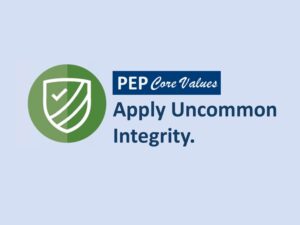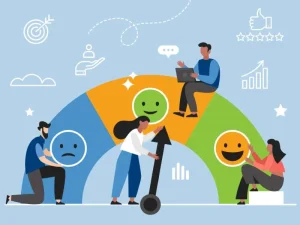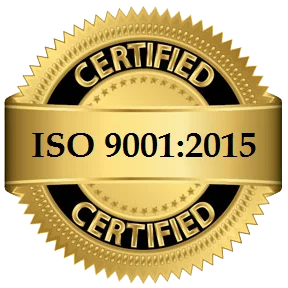 The current learning culture in the federal government is weighted heavily toward formal training prescribed by certification or competency requirements. Creating a culture that balances organizational requirements with employee-driven development will animate a workforce development strategy that measurably improves employee performance and engagement. We need to foster a culture within the federal government that empowers employees to take ownership over their professional development experience and equips them with the information, tools, and support they need to succeed in their roles. This approach is embodied by three employee- and learner-centric proficiency statements:
The current learning culture in the federal government is weighted heavily toward formal training prescribed by certification or competency requirements. Creating a culture that balances organizational requirements with employee-driven development will animate a workforce development strategy that measurably improves employee performance and engagement. We need to foster a culture within the federal government that empowers employees to take ownership over their professional development experience and equips them with the information, tools, and support they need to succeed in their roles. This approach is embodied by three employee- and learner-centric proficiency statements:
- I’m ready to learn.
- I’m ready to demonstrate what I’ve learned.
- I’m ready to go to the next level.
Understanding How Employee Development Occurs
Learning is an output of work, not just an input. Studies of workplace learning consistently show that 80 to 90 percent of the skills and knowledge people need to do their jobs are learned outside the classroom. The learning potential in work situations can be tapped through activities such as on-the-job coaching, developmental assignments, sharing of lessons learned and assigning real work to learning-project teams. These informal, unstructured situations are precisely the way most adults learn best.
The most effective learning follows the apprenticeship and mentoring model: learning by observation and by doing a task with someone who has done it before. Much of learning is trial and error. The learner tries many different things, reflects on what is learned, and then tries again while incorporating the new learning. Classroom training and self-paced online courses are ideally suited to cognitive content. Changes in attitude and behavior can only be learned by doing. Thus, action counts more than elaborate programs or models of workforce development.
Informal, self-directed learning is ideally suited to tight budgets; it costs much less and happens to be the best way many people learn, particularly Millennials.
The Key Role of Managers
Managers traditionally view training as a tool to prepare employees for new positions. Training funds are still the first to go when it comes time to cut the budget. The challenge for management is to provide leadership in moving from training to continuous learning. Managers can provide leadership by creating environments, reinforcing norms, and helping set expectations through what they do – through their actions and not just their words.
Research and best practices all point to the employee’s manager as the most important single determinant of success. While mentors, peers, and coaches provide important support, active involvement by the employee’s manager is indispensable. Managers should play the role of partner in the employee’s development, starting with preparation and implementation of the Individual Development Plan (IDP). Ongoing support from managers should include the following:
- Opportunities to practice new skills.
- Developmental opportunities such as special projects or rotations.
- Emotional support and encouragement.
- Specific feedback on how to improve.
- Support in obtaining funding for training.
- Help in getting time away from work to attend training.
Setting Expectations and Providing Training and Support to Managers
Agencies should take steps to encourage supervisors to actively support development of their direct reports. Competency models and performance plans should include “Developing Others.” A good starting point is to ensure that supervisors receive training on how to do this. They must have a basic understanding of how people learn. According to research done by the Center for Creative Leadership, the best learning occurs when three requirements are met: 1) learners get data on their gaps, either formally or informally; 2) learners experience a challenge that stretches them to learn and apply new skills; and 3) leaners get support from others, including peers, supervisors, coaches, and mentors.
Supervisors should understand the purpose of tools such as competencies, skills assessments, and IDPs, and how to utilize them. Since most learning occurs through experience on the job, supervisors can make a big impact on employee development for modest cost and investment of time by carefully assigning work with developmental objectives in mind. Depending on the employee, these might involve learning a new skill, interacting with a different organization, or playing a new role such as overseeing contractors or providing customer service. The best companies for talent development commonly require managers to experience novel or difficult situations, with support, as these are packed with learning potential.
About the Author: Preston “Tim” Brown is a human capital management professional with experience as a federal employee, manager for a Fortune 500 company, and management consultant to the federal government. He was instrumental in developing and launching the Census Bureau’s project management certificate program. Celebrating its 20th anniversary in 2019, the program has trained more than 5,000 project managers to date. At URS Corporation, Mr. Brown managed staffing and talent development for a global business unit. As a federal consultant, he has supported human capital management initiatives at the Department of Housing and Urban Development, Department of Transportation, Pension Benefit Guaranty Corporation, Patent and Trademark Office, Centers for Disease Control and Prevention, and the National Institutes of Health. Mr. Brown’s areas of special interest include learning and development, workforce planning, succession planning and leadership development, individual development planning, and the manager’s role in development. He is a graduate of George Washington University’s Master’s program in Human Resource Development. Mr. Brown is currently a Senior Human Capital Consultant with Performance Excellence Partners LLC, supporting strategic human capital planning at the National Science Foundation in Alexandria, Virginia.
To Learn More: please visit PEP’s strategic human capital services page or contact us. We are an HCaTS SB Pool 2 prime contractor and enjoy partnering with other contractors to provide effective and innovative solutions. To be the first to receive our next blog post, please join our mailing list. You can download a copy of the PDF here.





